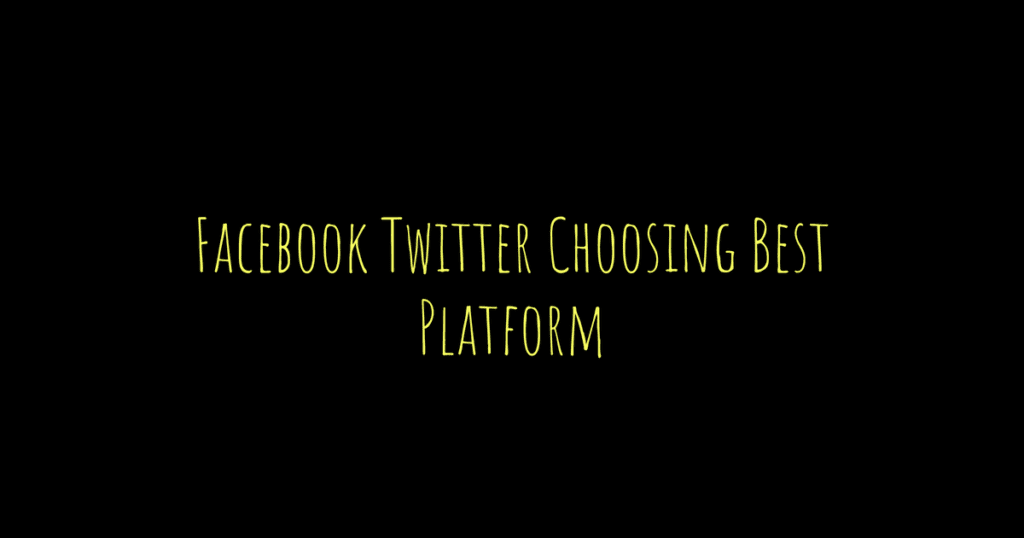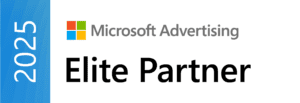Table of Contents
- Comparing User Base and Popularity of Facebook and Twitter
- Understanding User Demographics for Each Platform
- Analyzing Engagement Patterns on Facebook and Twitter
- Differences in Functionality and Content Types
- Advertising Features and Cost Comparison
- Unique Strengths and Ideal Use Cases
- How to Choose Based on Your Brand Goals and Audience
- Testing Strategies for Effective Platform Use
- Maximizing Reach by Combining Both Platforms
- Frequently Asked Questions
10.1. How do Facebook and Twitter differ in helping brands connect with their audience?
10.2. Which platform is better for building brand loyalty and community?
10.3. What are the content style differences between Facebook and Twitter that brands should consider?
10.4. How do the audience demographics on Facebook and Twitter affect where a brand should focus?
10.5. In what ways can Twitter’s real-time interaction capabilities complement Facebook’s broader reach for a brand?
Facebook and Twitter are both popular social networks, but they serve different purposes for brands. Facebook, with over 2 billion users, offers broad reach and deeper engagement through longer posts, videos, and detailed targeting options. It works well for brands wanting to build lasting relationships and reach diverse age groups, especially older audiences. Twitter (now X), having fewer users but a younger demographic, is faster paced and great for quick updates, trending topics, real-time interaction, and influencer engagement. Choosing the right platform depends on your brand’s goals and target audience; sometimes using both strategically can deliver the best results.
Comparing User Base and Popularity of Facebook and Twitter

Facebook stands as the largest social media platform worldwide, boasting over 2 billion monthly active users. Its audience is vast and diverse, spanning multiple age groups and regions, which gives brands a broad reach across generations, from younger users to seniors. This extensive user base supports a wide variety of content types and interactions, with billions of comments on brand pages monthly and a high frequency of daily logins. In contrast, Twitter, with about 330 million monthly active users, serves a smaller but highly influential audience. It attracts public figures like world leaders, journalists, and celebrities, making it a key platform for shaping global conversations. Twitter’s strength lies in real-time updates and fast news dissemination, ideal for brands that want to engage with trending topics and current events quickly. While Facebook users engage deeply with content over longer periods, Twitter’s audience is niche yet highly active around trends and time-sensitive information. Both platforms have strong global footprints but differ significantly in user behavior and content style, so choosing the right one depends largely on whether your brand aims for broad, sustained reach or rapid, real-time influence.
Understanding User Demographics for Each Platform
Facebook boasts widespread adoption across genders, with 75% of male and 83% of female internet users active on the platform. It reaches about 22% of the global population, covering a broad age range that includes a growing number of seniors, 41% of people aged 65 to 74 use Facebook. This makes Facebook a strong choice for brands looking to engage diverse groups, from younger adults to baby boomers and families. Users often connect with friends, family, and brands in a community-like atmosphere, which can foster deeper relationships. In contrast, Twitter’s audience skews younger, with 81% of millennials checking in daily. About 36% of users are aged 18 to 29, and 23% fall between 30 and 49. Twitter attracts professionals, journalists, politicians, and celebrities, positioning it as a hub for public opinion and trending news. Brands targeting fast-paced conversations, influencers, or younger, news-focused customers tend to find Twitter more effective. Understanding these demographic differences helps marketers tailor their messaging and choose the platform that best aligns with their target audience’s age, interests, and engagement style.
| Demographic Aspect | ||
|---|---|---|
| Monthly Active Users | Over 2 billion | Around 330 million |
| Gender Adoption | 75% male, 83% female internet users | Not specified |
| Age Distribution | 22% of global population; 41% of ages 65-74 | 81% millennials daily; 36% ages 18-29; 23% ages 30-49 |
| Audience Type | Broad range: boomers, families, seniors | Younger audience; professionals, journalists, celebrities |
| User Behavior | Connecting with family, friends, brands | Trending news and real-time updates |
| Geographical Reach | Global, all age groups | Global, niche but influential users |
| Platform Appeal | Community, broad demographics | Real-time news, quick information |
Analyzing Engagement Patterns on Facebook and Twitter
Facebook consistently delivers higher engagement rates, with about 700 interactions per million followers compared to Twitter’s roughly 300. Users on Facebook tend to be more active, leaving around 5 billion comments on brand pages monthly and logging in about 8 times a day. This frequent access allows brands multiple touchpoints to connect with their audience. Content on Facebook enjoys a longer lifespan, which means posts, especially videos, continue to generate engagement over days or even weeks. Video content thrives on Facebook as users watch approximately 100 million hours daily, and the rise of Facebook Live streams, up by 330%, has significantly boosted real-time interaction.
On the other hand, Twitter’s engagement is faster but more fleeting. Tweets often have visibility for just minutes, requiring brands to post timely and relevant content to capture attention. Twitter users check their feeds about 5 times a day, favoring quick scans and short bursts of information. This fast pace suits punchy messages, trending topics, and real-time conversations well, making it ideal for brands wanting to participate in immediate discussions and news cycles.
For example, a brand launching a product might use Facebook to share detailed videos and stories that build a lasting connection, while on Twitter, they might run quick updates and engage during live events or trending hashtags. Understanding these differences in engagement patterns can help brands tailor their content strategy to get the most value from each platform.
Differences in Functionality and Content Types
Facebook is built for deeper engagement, supporting a wide range of content types like long posts, photos, videos, events, groups, and detailed brand pages. It offers tools such as Facebook Live for real-time interaction and extensive analytics for measuring performance. Video content plays a huge role on Facebook, with live streaming and on-demand videos competing heavily for user attention. Brands can also build communities through groups and events, making it a strong platform for nurturing ongoing relationships. On the other hand, Twitter is designed for quick, real-time updates with a 280-character limit on posts, alongside images, GIFs, and videos. It supports Twitter Cards, which enhance interaction and help with lead generation. While Twitter also offers live streaming through acquisitions like Periscope, the platform’s main strength lies in rapid content sharing, trend participation, and public conversations. Both platforms require tailored strategies because their content formats and user expectations differ: Facebook favors in-depth storytelling and community building, while Twitter excels at fast-paced messaging and trend engagement.
Advertising Features and Cost Comparison
Facebook offers highly advanced ad targeting options, allowing brands to narrow down audiences by demographics, interests, location, and behaviors. This precision helps reduce wasted ad spend by reaching the right people, although rising competition and platform saturation have driven up ad prices in recent years. Facebook’s advertising tools include competitor tracking with “Pages to Watch,” app analytics, Messenger for Business to engage customers directly, and detailed post metrics that provide deep insights into campaign performance. These features make Facebook a strong choice for brands that want broad reach and in-depth analysis of their marketing efforts.
On the other hand, Twitter ads are generally less expensive and face less competition, making them attractive for brands with smaller budgets or those seeking faster results. Twitter supports lead generation cards and offers ROI tracking tools, which work well for campaigns focused on real-time events and trending topics. While gaining followers on Twitter is typically easier, keeping those followers engaged over time can be more challenging due to the platform’s fast-moving content stream. Brands targeting younger audiences, news-driven communities, or influencer-heavy markets often find Twitter’s advertising environment better suited to their needs.
For example, a brand launching a new product might use Facebook to run detailed, targeted campaigns that nurture potential customers over weeks or months, while using Twitter ads to capitalize on immediate buzz during a product launch event or trending hashtag. Both platforms offer unique advantages depending on your goals, budget, and desired level of campaign detail.
- Facebook provides highly advanced ad targeting: demographics, interests, location, and behaviors.
- This precise targeting helps brands lower costs by reaching the right audience.
- Ad prices on Facebook have risen due to competition and platform saturation.
- Features include competitor tracking, app analytics, Messenger for Business, and detailed post metrics.
- Facebook is suitable for brands seeking in-depth campaign analysis and broad reach.
- Twitter ads are generally less expensive and less competitive than Facebook’s.
- It offers lead generation cards and ROI tracking tools for advertisers.
- Twitter ads work well for real-time campaigns and trend-focused marketing.
- Building followers on Twitter is easier but maintaining engagement is more challenging.
- Brands targeting younger, news-driven, or influencer-heavy audiences may prefer Twitter ads.
Unique Strengths and Ideal Use Cases
Facebook stands out for its ability to reach broad and diverse audiences across many demographics, making it ideal for brands looking to build long-term relationships and foster community engagement. Its strength lies in supporting rich media campaigns, including video and interactive content, which resonate well with older demographics and families. Brands aiming for in-depth marketing strategies benefit from Facebook’s multi-layered advertising options and detailed targeting capabilities. On the other hand, Twitter excels in delivering quick, timely messages that tap into trending topics and real-time conversations. It’s well suited for industries like news, politics, entertainment, and customer service that require fast, bite-sized communication. Twitter also offers a valuable platform for brands to connect with influencers and thought leaders, helping to boost brand awareness in a fast-moving environment. For example, a news outlet might use Twitter to break stories and engage with followers instantly, while a family-oriented brand might leverage Facebook’s video and group features to deepen customer loyalty. Choosing between the two depends largely on whether your brand’s priority is sustained engagement with diverse audiences or rapid interaction around current events and trends.
How to Choose Based on Your Brand Goals and Audience
Choosing between Facebook and Twitter depends heavily on your brand’s specific goals and the audience you want to reach. There is no one-size-fits-all platform; instead, your decision should start with understanding where your target customers spend their social media time. For example, if your brand aims to engage an older or family-focused demographic, Facebook’s broad user base and detailed targeting tools make it the natural choice. On the other hand, if your brand targets younger professionals or thrives on real-time news and trends, Twitter’s fast-paced environment can offer more effective engagement. Testing pilot campaigns on both platforms can provide valuable insights into which yields better interaction and return on investment for your brand. Using both platforms strategically can also work well: leverage Facebook for sustained community building and rich content, while using Twitter to join trending conversations and deliver quick updates. Consider the content style, too, longer posts, videos, and events fit Facebook’s format, while short, punchy messages thrive on Twitter. Aligning the platform’s strengths with your brand’s objectives and audience preferences helps optimize your social media strategy and maximize your marketing impact.
Testing Strategies for Effective Platform Use
Starting with small budget campaigns is key to understanding how your brand performs on Facebook and Twitter. By running limited tests, you can monitor important metrics like engagement rate, click-through rate, and conversions without overspending. It’s essential to test various content formats, videos, images, text posts, and live streams, to see what resonates best with each platform’s audience. For example, Facebook’s users engage well with longer videos and live sessions, while Twitter favors quick, punchy updates and short videos. A/B testing different ad creatives and targeting options helps refine your approach by showing which combinations drive better results. Keep an eye on audience behavior through platform analytics tools to spot patterns and adjust posting times, ensuring your content reaches users when they’re most active. Evaluating cost per engagement and cost per acquisition will help you budget effectively, especially since Facebook ads tend to be more competitive and pricier than Twitter’s. Combining organic posts with paid content gives a clearer picture of your overall impact and helps balance your marketing mix. Lastly, carefully documenting all results from these tests will guide future campaigns, letting you optimize spend and focus on what works best for your brand’s goals on each platform.
Maximizing Reach by Combining Both Platforms
Using Facebook and Twitter together lets brands tap into the unique strengths of each platform to reach wider audiences effectively. Facebook is ideal for deep storytelling and building a community around rich media like videos, photos, and detailed posts. It’s where brands can nurture long-term relationships through sustained engagement and meaningful conversations. On the other hand, Twitter excels at real-time updates, breaking news, and joining trending conversations with short, punchy messages that catch attention quickly. Cross-promoting content between the two platforms enhances visibility, sharing Twitter highlights on Facebook can bring in users who prefer longer content, while tweeting about Facebook events or live streams helps amplify those moments to a broader, more active audience. Tailoring your messages to fit each platform’s style and audience also matters; for example, use Facebook ads for ongoing brand awareness campaigns and Twitter ads for timely promotions tied to events or trends. Monitoring both platforms for customer feedback and service questions ensures you stay connected and responsive. Coordinating campaigns across Facebook and Twitter creates a consistent brand voice without sounding repetitive. Tracking performance metrics on both channels reveals how they complement each other in driving reach and engagement, allowing you to adjust your content frequency and style to match user behavior on each platform. For example, a brand might post longer educational videos on Facebook while using Twitter to spark quick discussions or share breaking industry news. Combining these platforms strategically maximizes your brand’s presence and impact in the social media landscape.
Frequently Asked Questions
1. How do Facebook and Twitter differ in helping brands connect with their audience?
Facebook offers more detailed targeting options and supports various content types like videos, images, and long posts, making it easier to engage with different audience segments. Twitter is faster-paced with a focus on real-time updates and brief messages, which works well for conversations and trending topics.
2. Which platform is better for building brand loyalty and community?
Facebook typically provides better tools for fostering a loyal community because of features like groups, events, and detailed user profiles. Twitter lets brands join broad conversations quickly, but building lasting relationships can be harder due to its fast-moving timeline.
3. What are the content style differences between Facebook and Twitter that brands should consider?
Facebook supports longer, richer posts including photos, videos, and articles, allowing for deeper storytelling. Twitter relies on short, sharp messages limited to 280 characters, making it ideal for quick updates, news, and engaging with trending hashtags.
4. How do the audience demographics on Facebook and Twitter affect where a brand should focus?
Facebook tends to have a wider and more diverse age range, which benefits brands targeting various groups. Twitter’s audience is often younger and more urban, suited for brands looking to tap into current culture, news, and tech-savvy audiences.
5. In what ways can Twitter’s real-time interaction capabilities complement Facebook’s broader reach for a brand?
Twitter excels at immediate engagement during events, news breaks, or trending conversations, helping brands stay current and responsive. Facebook offers broader reach and richer engagement through detailed posts and community features, so combining both can provide real-time buzz and sustained connection.
TL;DR Facebook and Twitter serve different brand needs: Facebook offers a massive, diverse user base with strong engagement and detailed ad targeting, making it ideal for long-term customer relationships and rich media campaigns. Twitter is faster-paced with a younger, trend-focused audience, great for real-time updates, influencer engagement, and brand awareness. Choosing the best platform depends on your brand goals, audience demographics, and content style. Many brands benefit from using both, testing strategies to find the right mix and maximizing reach through platform-specific features.



